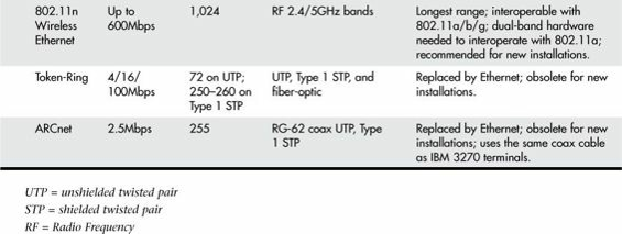Hardware Reference
In-Depth Information
Wired Ethernet
With tens of millions of computers connected by Ethernet cards and cables, Ethernet is the most
widely used data-link layer protocol in the world. You can buy Ethernet adapters from dozens of
competing manufacturers, and most systems sold in the past decade incorporate one or more built-in
Ethernet ports. Older adapters supported one, two, or all three of the cable types defined in the
standard: Thinnet, Thicknet, and unshielded twisted pair (UTP). Current adapters support only UTP.
Traditional Ethernet operates at a speed of 10Mbps, but the more recent standards push this speed to
100Mbps (Fast Ethernet) or 1,000Mbps (Gigabit Ethernet). Most desktop and even laptop systems
now incorporate Gigabit Ethernet. In the future we will likely see 10 Gigabit Ethernet (also known as
10G Ethernet) appearing in PCs. 10G Ethernet runs at 10,000Mbps and is used primarily in enterprise
data centers and servers.
Note
Throughout the remainder of this chapter, be aware that discussion of older Ethernet solutions
(such as those using Thicknet or Thinnet) as well as alternative networks (such as Token-Ring)
are only included for reference. You will usually encounter those technologies only when
working on older, existing networks. New network installations today normally use Gigabit,
Fast, or Wireless Ethernet.



